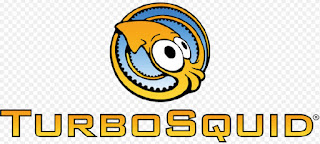 |
But how do you get started with dialogue animation? One of the most common problems encountered by student animators is how to block out a shot from scratch, starting with nothing but a blank screen and a line of dialogue. How do you begin?
After all, in animation you get nothing for free. You start off with a digital puppet, usually in a stiff "T-pose", and have to figure out the rest yourself.
How to Plan Animation
 |
| Start with thumbnail sketches: "I can't take it anymore" |
The video sets out an approach to the shot, including shooting live action reference and creating thumbnail sketches to make a plan.
Most importantly, the video explains how to imagine the scene, so that you start by making positive choices about the character's state of mind, and about what is happening in the shot. Animators are actors, and we need to create a memorable performance.
 |
| Start by writing out your story |
I always start out by writing the story out on paper. In this case, the story might be something like this: "Morpheus (Dad) comes home to find out that his teenage kids have wrecked the living room. Again. Just like last time. And the time before that. He loses it completely."
Animators often like to skip this stage and go straight to the computer, but time spent properly planning out a shot is never wasted. When I ask my students: "what is the character reacting to?", they will often reply something like: "Oh, they're reacting to something bad". Or, worse: "I have't decided yet". But you need to make these decisions up front, as the shot won't have any impact otherwise. After all, if you don't know what the shot is about, neither will your audience.
Select the character rig you want to use (make sure to test it properly so you know how it works) and import the character rig into the shot. Also import the line of dialogue as a wav file into your Maya timeline.
 |
| Tripod to shoot live action reference |
I generally shoot live action reference of myself acting out the shot, using a light, inexpensive tripod to mount my phone. The trick is to do multiple takes, trying out different ideas. Close your bedroom door and do this in private until you get a take you like.
Import the video into Premiere
Then, I import the video into Premiere, select the best performance, and trim the edit to the frames I want. These can then be imported directly into Maya onto an image plane. If you don't have Premiere, download some free editing software.
Create thumbnail sketches
Next I do thumbnail sketches based on the main poses. These are drawn like a comic strip, matching the bits of the dialogue to the main poses. The most important poses are the beginning, middle and end. Again, animators often like to skip this stage, but time spent planning and thumbnailing is never wasted.
Create a set
I like to import a set into my shots; there are lots of free sets available online at sites like Turbosquid.com, to make sure my shot makes sense and I know who the character is. This helps with the story telling, as we now have a sense of where we are, and what the story being told is.
Create a Shot Camera
At this stage it is important to create a camera, name it "shotCamera", frame your scene and lock the camera off. Avoid the temptation to leave your camera decisions until the end; this is a choice you should make up front. After all, you would set the camera up first of all if this were a live action shoot.
Blocking, and Key Poses
Now it's time to create your main poses on stepped curves in Maya: start, middle and end. This is the most important stage. Ask yourself - do you the poses make sense? Do we know what the character is thinking and feeling? Always do the first pose, then the last pose, then the middle pose.
The Tween Machine
Once I have the main poses blocked out, I then use the Tween Machine tool by Justin Barrett to break down my poses. This process can go pretty quickly; the Tween Machine speeds up your workflow dramatically.
Spline and refine
Once I've got my poses broken down to - roughly - around one pose every four frames, I spline the shot. To see how to do that, read this blog post. Then, it's a question of refining the shot to tweak it and make it look pretty.
For more on the experience of studying at Bucks New University, come and visit us at one of our Open Days, take a virtual tour of one of our animation studios, check out what our students think of our course, and see why we're ranked in the top 12 creative universities in the UK.


I really like your post. Thanks for sharing such a informative blog. Keep posting and upgrading our knowledge. 3D animations involve the creation of dynamic visuals in a three-dimensional space. Utilizing specialized software, animators craft sequences of frames that depict movement and interaction within virtual environments. These animations find applications in diverse fields such as entertainment, advertising, education, and simulation. They enhance storytelling, communication, and engagement by providing lifelike representations of characters, objects, and environments in digital media. To discover why our 3d animations stands out from the competition and how it can address your specific needs, click here to visit our dedicated page and learn more.
ReplyDelete